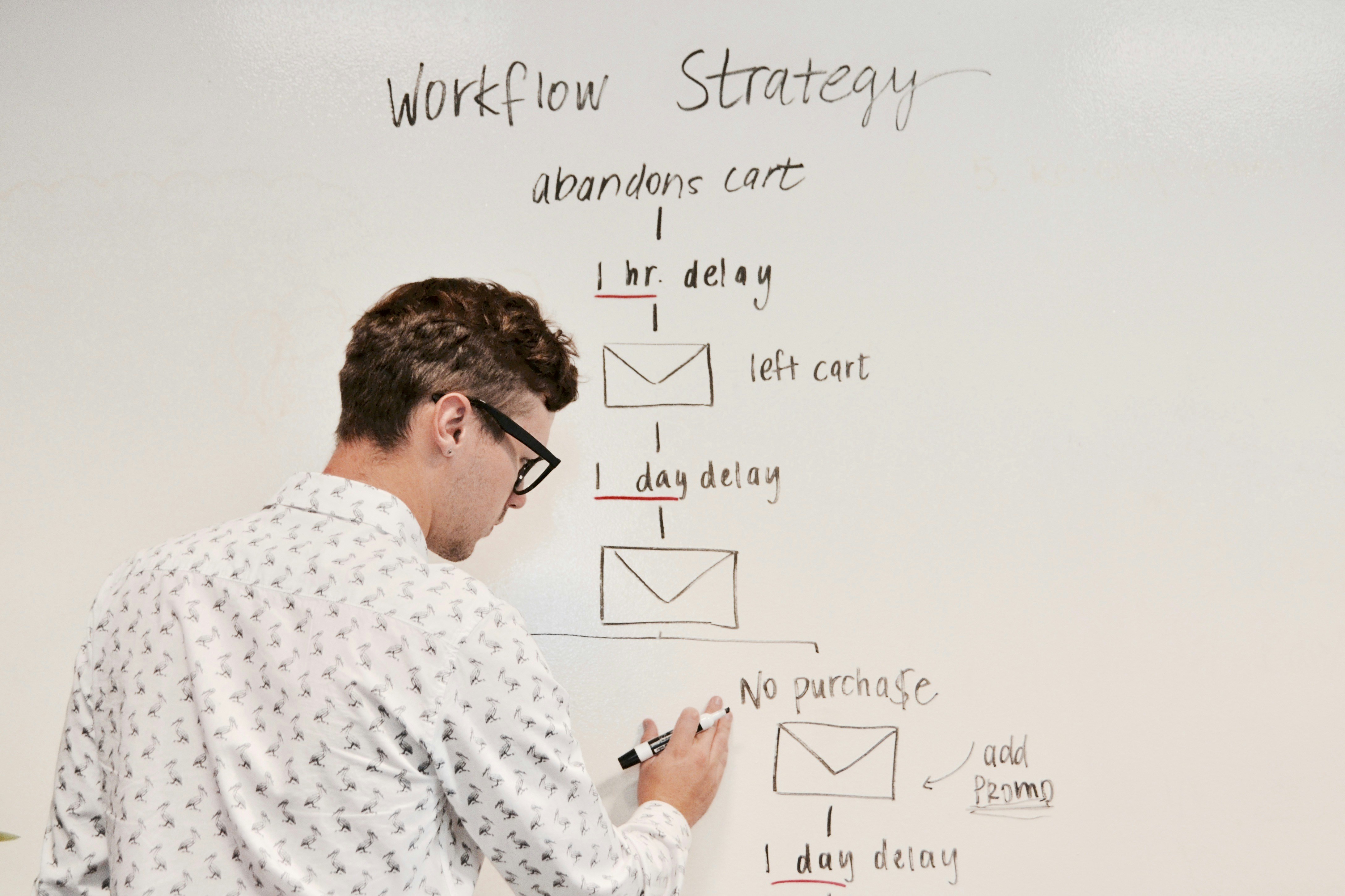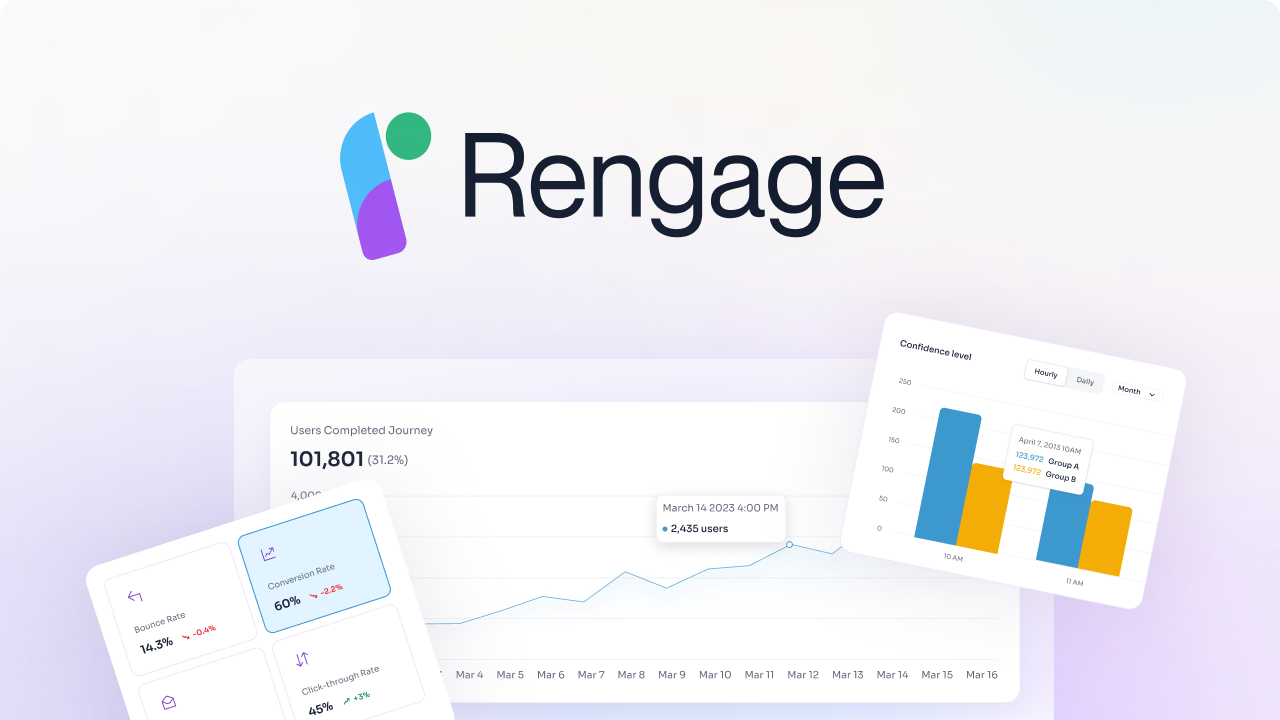The Ecommerce Customer Journey is a crucial aspect of Customer Lifecycle Management. Understanding the different stages shoppers go through can help e-commerce businesses deliver personalized experiences at each touchpoint. By analyzing the customer journey, businesses can identify pain points, improve customer satisfaction, and drive more conversions. In addition, customer journey mapping can also help businesses optimize marketing strategies, improve customer retention, and boost overall revenue. Sharpen your strategies and design your brand to meet the needs of your customers at every stage of their journey.
What Is the Ecommerce Customer Journey?

The customer journey is a cyclical path of interactions an individual has with your ecommerce brand or product and/or service. This path includes all touchpoints from the moment of first encounter to purchase and eventual brand advocacy. The customer journey is not restricted to the purchase itself but encompasses the entire experience with a brand. It includes various communication channels like email, SMS, ad retargeting, social media, website content, and more.
Comparing Ecommerce and Traditional Retail Journeys
An ecommerce customer journey involves all the touchpoints a customer encounters with a brand from the first touchpoint until advocacy. In contrast, a traditional retail journey primarily focuses on the offline experience, such as walking into a store, browsing, and purchasing. The difference between the two lies in the types of interactions that occur throughout the journey.
Importance of Digital Touchpoints
Digital touchpoints are critical in an ecommerce customer's journey as they enable tracking customer interactions and personalizing experiences. These touchpoints include social media, website content, ad retargeting, and email, among others. By personalizing these touchpoints, an ecommerce business can enhance the customer experience, improve brand loyalty, and increase conversions.
Tracking Online Interactions
To effectively track online interactions, ecommerce businesses use various tools and technologies that provide insights into customer behavior. These tools help businesses understand customers' preferences, buying patterns, and pain points. By analyzing this data, businesses can optimize their customer journey, tailoring the customer experience to meet individual needs and desires.
5 Stages of the Ecommerce Customer Journey

1. Awareness
In this stage, customers discover your brand and products. They learn about your business while you learn their preferences and needs.
2. Consideration
Customers show interest in specific products. They may explore particular categories, indicating a more focused interest.
3. Conversion
This stage marks the transition from prospective to actual customers. Deliver on promises and ensure a seamless experience to keep them engaged.
4. Retention
Customers exhibit brand loyalty, returning to your site for repeated purchases. Providing excellent experiences repeatedly is key here.
5. Advocacy
Customers become brand ambassadors, interacting across various touchpoints and advocating for your products/services.
Drive Loyalty and Growth with Rengage
We provide a comprehensive solution for managing and enhancing customer journeys, delivering insights and measurable outcomes with no code. We accelerate your customer journey from onboarding, and activation to conversion and churn. Enabling customers to unlock revenue from their existing users.
With Rengage, you can get insights into your segments, run campaigns with an intuitive journey manager, and get insights to measure how your journeys impact users conversion through our Journey Moments and Journey Builder features.
- Journey Moments: insights into your micro-segments
- Journey Builder: intuitive multi-channel marketing automation
- Insights prediction and attribution.
Book a free demo to learn about how you can transform customer interactions into personalized experiences that drive loyalty and growth.
Related Reading
What Is an Ecommerce Customer Journey Map?

Customer journey maps are visual representations of all the interactions a customer may have with your brand, creating better understanding of their needs and wants. The goal is to develop a comprehensive map that outlines each stage in the customer’s journey.
This process typically involves breaking down the journey into five key stages:
- Awareness
- Consideration
- Purchase
- Retention
- Advocacy
I can also create visual customer journeys in Ortto for each stage, guiding prospects towards conversion, and customers towards retention and advocacy.
5 Types of User Data to Develop an Ecommerce Customer Journey Map
1. Website Journey Data
Google Analytics (GA) is a vital part of your ecommerce website analysis toolkit. It offers reports and dashboards that provide insights about how people navigate through your site. Google Analytics provides segmenting capabilities to collect data about your defined user personas. For instance, the Behavior Flow report shows the paths customers take on your site and where they drop off, while the Conversion Path report showcases platforms customers use at each stage of their journey.
2. Behavior Analytics Data
Behavior analytics tools like Hotjar Heatmaps and Recordings offer insights into visitor interactions with your site. Scroll heatmaps show where people stop scrolling, click heatmaps show what they click the most, and recordings reveal individual user behaviors as they navigate your site.
3. Email Queries, Chat Logs, and Customer Support Logs
Conversations with customers can provide insights about common frustrations and necessary information. Categorizing and logging customer queries and support requests can help identify trends in customer journeys.
4. On-site and Email Surveys
Collecting feedback from customers provides subjective and quantitative data to support optimization efforts. Surveys can be sent via email after customer support interactions or successful purchases.
5. Customer Interviews
One-on-one discussions with customers uncover their needs, motivations, and pain points. Offering incentives can encourage customer participation, while exit interviews with customers who change suppliers can reveal weak links in the customer journey.
5 (Very Good) Reasons to Create Ecommerce Customer Journey Maps

1. It gives you more control over the customer journey
When you understand each step, you are able to create campaigns and messages that nudge customers towards the next phase of the journey, to help them become loyal.
2. It provides a better understanding of the customer
By mapping customers’ key interactions with your brand, you can have a clearer view of their behaviors and interests so you can predict their behavior and preferences. For example, a shoe brand might note that a customer has found their website by searching ‘white running trainers’ on Google, so can confidently assume this is the product they are looking for. The brand can then retarget the customer by showing them items that match their search.
3. It helps to identify strengths and weaknesses
Having a customer journey map can make it easier for brands to identify what’s working and what isn’t within their marketing efforts. For example, a brand may find that a lot of prospective customers are getting stuck in the consideration stage and aren’t making it to that all-important conversion stage.
This may cause the brand to go back to the drawing board to uncover what these customers need and what they’re not getting. Maybe there’s some unclear messaging on product pages, their CTA button isn’t clear, shipping processes are off-putting, or maybe their competitors are beating them on price. Whatever it is, a journey map can provide clarity.
4. It enables effective goal-setting
Armed with customer behavioral data and clarity around what processes do and don’t work for your business, you can make your goals more specific and identify what it will take to reach them – i.e. S.M.A.R.T goals. For example, instead of setting a goal like “bring in more customers”, you can say, “improve the website experience to increase conversions by X%”.
5. It creates a better customer experience
A symptom of mapping the customer journey is that the messaging across all touchpoints is aligned and the customer receives a unified experience. This increases trust.
Related Reading
- Digital Customer Journey Mapping
- Customer Journey Analysis
- B2B Customer Journey
- Customer Journey Orchestration
- Omnichannel Customer Journey
- Saas Customer Journey
- Marketing Automation Customer Journey
- Customer Journey Optimization
- Micro Moments Customer Journey
- Customer Journey Research
- Customer Journey Automation
- Customer Journey Insights
- Customer Journey Dashboard
- Customer Journey Personalization
- Customer Journey Metrics
- Customer Journey Best Practices
15 Helpful Ecommerce Customer Journey Tools
1. Rengage

We provide a comprehensive solution for managing and enhancing customer journeys, delivering insights and measurable outcomes with no code. We accelerate your customer journey from onboarding, activation to conversion and churn. Enabling customers to unlock revenue from their existing user. With Rengage, you can get insights into your segments, run campaigns with an intuitive journey manager, and get insights to measure how your journeys impact users conversion through our Journey Moments and Journey Builder features.
- Journey Moments: insights into your micro-segments,
- Journey Builder: intuitive multi-channel marketing automation, Insights prediction and attribution
Book a free demo to learn about how you can transform customer interactions into personalized experiences that drive loyalty and growth.
2. Sketch
Sketch is a long-established industry standard for designing websites and interfaces. It offers a robust platform for creating detailed user journey prototypes, utilizing its extensive library of templates and components. This vector-based tool has a user-friendly interface, making it easy to create visually appealing diagrams and journey maps.
3. Adobe XD
Adobe XD is a newer entrant to the prototyping space, but it comes from a brand with a long history in design software. XD is a powerful tool for creating journey map prototypes, with features that allow for dynamic, interactive prototypes. The software is easy to use, with a clean interface and integrative features with other Adobe products.
4. Figma
Figma's popularity has soared recently thanks to its effective freemium model and superior collaboration features. It provides real-time collaboration, allowing multiple team members to work on the same prototype simultaneously. Its template library is not as robust as Sketch's.
5. Mural
Mural is a digital workspace for visual collaboration. It's a flexible tool that supports a variety of diagram types, including customer journey maps. Mural leans heavily into design thinking, facilitating brainstorming, and collaboration.
6. Miro
Miro is an all-in-one diagramming tool suitable for a wide range of use cases, including customer journey mapping. It offers an infinite canvas, an array of diagramming tools, and plenty of virtual sticky notes, making it a flexible and user-friendly option.
7. Smaply
Smaply is a specialized tool designed specifically for creating customer journey maps, personas, and stakeholder maps. It offers a clean, intuitive interface, and features specifically designed to support these tasks.
8. Fullstory
Fullstory is a powerful behavioral data platform that offers robust journey map analysis. Its unique selling proposition is the level of detail and precision it offers in its user behavior data.
9. Heap.io
Heap.io is another popular journey map analysis tool. It offers a variety of features for tracking user behavior, including event tracking, funnel and retention analysis, and segmentation.
10. Glassbox
Glassbox is a customer experience analytics platform that provides tools for journey mapping, session replay, and performance analytics.
11. UXPressia
UXPressia is a visual collaboration tool that can create customer journey maps, buyer personas, and impact maps. You can select a template from its library, which sorts the templates according to industries.
12. Custellence
Custellence is another customer journey mapping software that has a free version. It’s easy to use, thanks to its drag-and-drop functionality. It also has tutorials, courses, and a chatbot button on the lower right-hand side to get help whenever needed.
13. LucidChart
Looking for software that can create your customer journey and stakeholder diagrams? LucidChart is an app that can create business processes, data flow, and customer journey maps. This customer journey management tool has artificial intelligence (AI) and automation features to streamline your processes. Pick from its templates of ideas, customer journey maps, systems, and process diagrams.
14. Milkymap
Milkymap is one of the best free customer journey mapping tools you can use to improve your processes for a better customer experience. Its dashboard shows your data almost in real time, so you always have your customer’s thoughts and interactions in mind.
15. Microsoft Dynamics 365
Microsoft Dynamics 365 is a full suite of enterprise marketing, sales, customer service, and accounting software. Its sales and marketing module, Customer Insights, enables you to better understand your customers by using tools that map their journeys.
Related Reading
- Customer Lifecycle Management Software
- Customer Journey Mapping Tools
- Customer Journey Management
- Braze Alternative
- Fullstory Alternatives
- Adobe Analytics Alternatives
- Customer Journey Analytics Tools
- Iterable Competitors
- Marketo Alternatives
- Onesignal Alternatives
- Clevertap Alternatives
- Bloomreach Alternatives
- Customer.io Alternatives
How to Improve Your Ecommerce Customer Journey

1. Improve customer delight
It’s simple — the more customers enjoy interacting with you, the further they’ll move along their customer journey. Improving customer delight can help boost conversions and deepen meaningful customer engagement, creating more profound and more meaningful bonds.
Here’s what increasing customer delight looks like in practice:
- Offer unique rewards for birthdays or special occasions
- Create special events
- Offer swag
- Create a community around your brand or product
- Offer surprises, like flash sales or special discounts through loyalty programs
- Interact individually with customers on social media
- You can let your creativity run wild when thinking of new ways to delight your customers — there’s practically no wrong answer!
2. Create FOMO
FOMO is a powerful motivating force to harness to drive engagement and improve your customer journey. After all, if you can make customers feel like they’ll miss out if they don’t take the next step, you’ll get more doing so at each stage.
Here are some practical ways to increase FOMO in a good way across your ecommerce customer journey:
- List how many items of a product can still be purchased.
- Include a timer on a shopping page showing how much time remains in a sale.
- Show how many customers viewed a product over the last hour or day.
- Emphasize that supplies are limited.
- Highlight an essential date for an event and create countdown email sequences.
- When creating a sense of urgency, it’s crucial to consider how you’ll do it. You may want to avoid seeming manipulative, which can turn customers off.
On the other hand, if your research suggests it might be appropriate for your audience, especially if they expect some attitude from your brand, it just might work.
3. Conduct surveys
Surveys provide information about customers that can help you better tailor your experience to them. In-person and online surveys help glean information that metrics and search results won’t yield.
You can collect surveys anywhere, including the following:
- Online
- In-person
- Through emails
- When clicking on pages of your site
Think of what information you could use to improve your customer experience. Then, you can create a survey that gets you the information you need. The possibilities for this approach are endless.
4. Raise your social proof
You need prospects to take the next step, whether clicking on your site, completing a purchase, or even opening a “thank you” email. Prospects have an easier time taking that next step and feel better about making it when they see they’re not alone.
Here are some ways to raise social proof:
- Highlight customer reviews
- Show how many others bought an item
- Share testimonials
- Social media posts
Optimizing your ecommerce journey for social proof removes many reservations customers might have when getting ready to take the next step.
5. Personalize every touch point
Customers expect greater personalization, and you likely have room to improve this in your customer experience. With better data collection at each touch point, you’ll gain more data and opportunities to personalize interactions further.
Here are some ways to do that:
- Add a contact’s name to communications with them, such as texts or emails.
- Tailor your offerings based on a customer’s location, purchase, or browsing history.
- Deploy exit pop-ups designed for each prospect’s stage of the buyer’s journey.
- Create special offers that match a prospect’s desires.
Personalization isn’t just getting on a first-name basis with your prospect. It extends to crafting the journey to match a prospect's unique wants, desires, and expectations. Sometimes, the most effective personalization doesn’t involve words at all.
Create Personalized Experiences That Drive Loyalty and Growth with Rengage — Book A Free Demo Today
I am excited to talk about Rengage, our powerful solution that can revolutionize how you manage and enhance Ecommerce customer journeys. Rengage offers a holistic approach to understanding your customers through their journey with your Ecommerce platform.
Our platform allows you to gain valuable insights and tangible outcomes without the need for coding expertise. With Rengage, we can fast-track your customer journey from the initial onboarding phase all the way through activation, conversion, and even churn. This means you can leverage your existing user base and turn it into a goldmine of revenue.
Insights with Rengage
Rengage offers you the ability to delve deep into your customer segments and understand them better than ever before. By harnessing our platform, you can uncover valuable insights into micro-segments, giving you a level of understanding that will enable you to truly tailor your Ecommerce customer journey to each customer. This personalized approach is a game-changer in the Ecommerce industry.
Run Campaigns with Rengage Journey Manager
The journey manager tool that comes with Rengage is an intuitive and easy-to-use platform that allows you to plan and execute your marketing campaigns seamlessly. Whether you have a small team or a large operation, this tool will make your life easier when testing marketing strategies and analyzing results.
Measure Performance with Rengage
Rengage offers several features that allow you to measure the success of your customer journeys accurately. Our Journey Moments feature can help you predict customer behavior and understand why customers convert. The Journey Builder feature enables you to create multi-channel marketing campaigns that have a significant impact on your customer base. And finally, our insights prediction and attribution tools will help you understand the impact of your campaigns on your bottom line.
Book a Free Demo
If you're interested in transforming your customer interactions and creating personalized experiences that will drive loyalty and growth, we invite you to book a free demo with us. We can walk you through the power of the Rengage platform and show you how to leverage your Ecommerce customer journey to its fullest potential.
